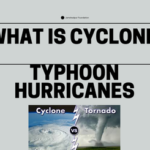Covid And Bio Medical Waste: Issues and Way Out

Due to covid pandemic there is manifold increase in generation of Bio Medical Waste in India. With the Coronavirus still raging, one of the other major fallouts has been the surge in hazardous bio-medical waste. Greater generation of biomedical waste is inevitable during the pandemic outbreak, and its safe handling, treatment and disposal of waste must be prioritized for minimizing contamination of land, water and air.
Biomedical waste, according to the existing biomedical waste rules, is any waste that is generated during the diagnosis, treatment or immunisation of human beings, animals or research activities etc. It could include human tissues, items contaminated with blood, body fluids like dressings, plaster casts, cotton swabs, beddings contaminated with blood or body fluid, blood bags, needles, syringes or any other contaminated sharp object.
CHALLENGES
Local bodies are not equipped to handle biomedical waste, and even the public doesn’t have enough knowledge about segregating it.
Common bio-medical waste treatment facilities (CBWTFs) operators says that setting up such facilities is not economically feasible for considering non-availability of funds for operation, non-compliance with segregation of such wastes at the (All bedded healthcare facilities) HCFs level and non-payment of fees by them to the CBWTF personnel.
Generally Defaulters (HCFs, CBWTFs) are mostly, either suspended or their contracts are cancelled through District Magistrate (DM) but, are never levied heavily for their non-compliance.
Way Forward
To run advertisements in the papers to sensitise people about segregating biomedical waste.
Managing healthcare waste requires effective knowledge not only among those who produce the healthcare waste but also among those who handles it. So, to achieve this, HCFs and regulatory authorities have to take stringent measures in order to ensure safe disposal of BMW in the country.
Training and awareness programme for healthcare personnel needs to be conducted;
Legal actions against defaulting HCFs and ill-operated CBWTFs is obligatory; self-regulatory mechanism for monitoring and implementation for waste management should be encouraged, and well timed sufficient allocation of funds through central funding from National Rural Health Mission (NRHM) should be ensured.
Cities that have heavily centralised waste management systems have more challenges over cities with decentralised resource management systems. Implementation of a third bin for hazardous waste; effective segregated collection of municipal solid waste and bio-medical waste at the household level.
In smaller towns, there are not sufficient bio-medical waste management facilities, need to upscale the same. India needs to focus on capacity building and upgrading existing facilities.
Waste audit should be linked to patient footfalls and surgical and inpatient records.
Entrepreneurs should be promoted to invest under public-private-partnership and come up with more treatment units, meeting environmental norms.
The Environment ministry released the new Bio-medical Waste Management Rules, 2016 which will bring in a wider and more comprehensive regime for bio waste management. Under the new regime, the coverage has increased and also provides for pre-treatment of lab waste, blood samples, etc. It mandates bar code system for proper control. It has simplified categorisation and authorisation.
. In March 2018, the BMW amendments delve into extension of dates to phase out — chlorinated plastic bags (excluding blood bags) and gloves; establishing barcode system by both, generators and operators; institute Global Positioning System (GPS) in vehicles of CBWTF — by March 27, 2019 and ensure on-site pre-treatment of non-sanitary wastewater through disinfection or sterilisation as prescribed in the WHO Blue Book, 2014.
Bio-medical Waste Management Rules, 2016, Bio-medical waste is required to be segregated in 4 color coded waste categories.
- Common methods of treatment and disposal of bio-medical waste are by incineration/plasma pyrolysis/deep-burial for Yellow Category waste;
- Autoclaving/microwaving/chemical disinfection for Red Category waste;
- Sterilization and shredding, disinfection followed by burial in concrete pit/recycling through foundry/encapsulation for White Category sharps waste; and
- Washing, disinfection followed by recycling for Blue Category glass waste.






0 Comments